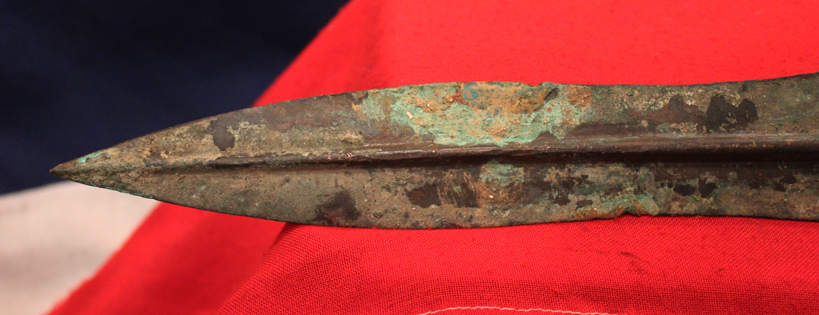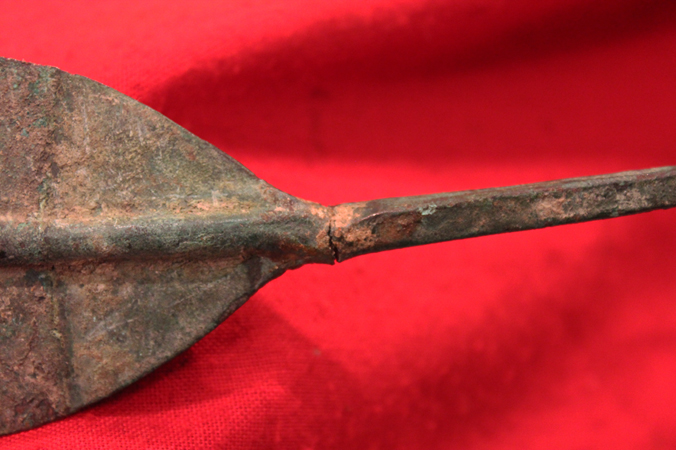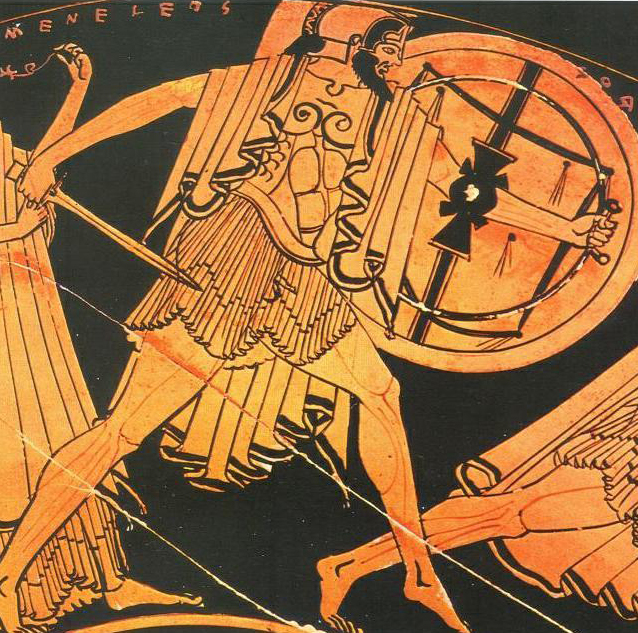A Very Fine, Original, Ancient, Punic War Period Early Roman Republic Era Short Sword, A Gladius Hispaniensis Double Leaf Shaped Blade Circa 2,400 Years Old
Gladius is a Latin word properly referring to the type of sword that was used by ancient Roman foot soldiers starting from the Republic period of the 3rd century BC, and until the mid Roman Empire period of 3rd century AD. From thence forward the more standard Roman sword was the spartha
Early ancient Roman swords were similar to those of the Greeks, called xiphe . From the 3rd century BC, however, the Romans adopted a weapon based on the sword of the Celtiberians of Hispania in service to Carthage during the Punic Wars, known in Latin as the gladius hispaniensis, meaning "Hispanic-type sword". Over time, the Romans improved their standard iron version weapon depending on how Roman battle units waged war and also created a number of variants. By 20 BC the Hispaniensis was replaced by the Mainz gladius (named after Roman swords found in Germany), in turn replaced by the Pompeii gladius. Finally, in the third century AD the heavy Roman infantry replaced the gladius with the spatha (already common among Roman cavalrymen), relegating the gladius as a weapon for light Roman infantry.
The Roman Republic had been aggressively expanding in the southern Italian mainland for a century before the First Punic War. It had conquered peninsular Italy south of the Arno River by 270 BC, when the Greek cities of southern Italy (Magna Graecia) submitted after the conclusion of the Pyrrhic War. During this period of Roman expansion Carthage, with its capital in what is now Tunisia, had come to dominate southern Iberia, much of the coastal regions of North Africa, the Balearic Islands, Corsica, Sardinia and the western half of Sicily in a thalassocracy.
Beginning in 480 BC Carthage fought a series of inconclusive wars against the Greek city-states of Sicily, led by Syracuse. By 264 BC Carthage was the dominant external power on the island, and Carthage and Rome were the preeminent powers in the western Mediterranean. Relationships were good and the two states had several times declared their mutual friendship via formal alliances: in 509 BC, 348 BC and around 279 BC. There were strong commercial links. During the Pyrrhic War of 280–275 BC, against a king of Epirus who alternately fought Rome in Italy and Carthage on Sicily, Carthage provided materiel to the Romans and on at least one occasion used its navy to ferry a Roman force. According to the classicist Richard Miles Rome had an expansionary attitude after southern Italy came under its control, while Carthage had a proprietary approach to Sicily. The interaction of these conflicting policies caused the two powers to stumble into war more by accident than design. The immediate cause of the war was the issue of control of the independent Sicilian city state of Messana (modern Messina). In 264 BC Carthage and Rome went to war, starting the First Punic War
A picture is shown in the gallery of a vase painting depicting a hoplite, 5th century BC. He is armed with a bronze cuirass, a leaf shaped hoplite sword and a hoplite shield of the Argive type, very similar to the gladius hispaniensis. (Paris, Louvre Museum). We show another sword carried in a period vase painting of the Death of Actaeon.
Bronze copper alloy, with superb natural age patination. And likely, the copper of the alloy was sourced from the ancient Cretan copper mines, with a percentage of added tin, in order to create the stronger bronze alloy. Small old age crack at the base of the blades tang. The Hilt would have been made from organic material, such as horn, bone or wood, a material that never survives once buried for the two millennia since it was last used in war. So all that remains is the bronze blade and its tang
Code: 20468
1875.00 GBP









